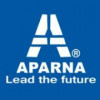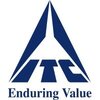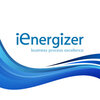

Aparna Constructions and Estates




50+ Aparna Constructions and Estates Interview Questions and Answers
Q1. What is the thickness of motar used in brickwork (vertical/horizontal direction)
The thickness of mortar used in brickwork varies depending on the type of brickwork and the desired strength.
The thickness of mortar in brickwork is typically between 10mm to 15mm.
For load-bearing walls, the mortar thickness may be increased to 20mm.
In some cases, thin-bed mortar systems are used, where the thickness can be as low as 3mm.
The thickness of mortar can also vary based on the type of bricks used, such as clay bricks or concrete blocks.

Q2. How can you add value to the brand of Aparna Constructions as a sales person and how diverse is your experience as a whole ?
As a sales person, I can add value to Aparna Constructions by utilizing my diverse experience in sales and marketing.
I have experience in developing and implementing successful sales strategies.
I can leverage my network and relationships to generate leads and increase sales.
I have a track record of exceeding sales targets and delivering results.
I am skilled in customer relationship management and can ensure customer satisfaction.
My experience in marketing can help in promotin...read more

Q3. Why bricks are wet during brick work
Bricks are wet during brick work to prevent them from absorbing water from the mortar too quickly.
Wet bricks prevent the mortar from drying out too quickly, which can weaken the bond between the bricks and the mortar.
Wet bricks also help to prevent efflorescence, a white powdery substance that can form on the surface of bricks due to the migration of salts.
Bricks should be dampened, not soaked, before use.
The amount of water used to wet the bricks should be carefully controll...read more

Q4. What is the key quality that a CRM executive should have ??
The key quality that a CRM executive should have is strong communication skills.
Strong communication skills are essential for a CRM executive to effectively interact with customers, colleagues, and stakeholders.
CRM executives need to be able to clearly convey information, listen actively, and resolve conflicts.
They should be able to articulate complex ideas in a simple and understandable manner.
Effective communication helps in building and maintaining strong relationships wit...read more

Q5. What is standard height between WC Outlet centre to Inlet center?
The standard height between WC Outlet centre to Inlet center is 6 inches.
The standard height is 6 inches or 15.24 cm.
This measurement is important for proper installation of toilets.
It ensures that the toilet will function properly and be comfortable for the user.
The measurement may vary slightly depending on the type of toilet being installed.
It is important to follow manufacturer instructions for installation.

Q6. Why bricks need to dry before starting the brick work
Bricks need to dry before starting the brick work to ensure proper bonding and prevent shrinkage.
Drying bricks removes excess moisture, allowing them to harden and strengthen.
Wet bricks can cause shrinkage and cracking during the drying process.
Dry bricks provide better adhesion with mortar, resulting in a stronger and more durable structure.
Moisture in bricks can lead to efflorescence, a white powdery deposit on the surface.
Drying bricks also helps to reduce the overall cons...read more

Q7. 1. Residential projects handled and value of units sold.
Handled residential projects worth $X and sold Y units.
Managed residential projects worth $X and sold Y units.
Successfully handled X number of residential projects with a total value of $Y.
Sold Y units in residential projects worth $X.
Managed and sold units in residential projects worth $X and Y respectively.

Q8. 1. What are the electrical inspections to be done on worksite?
Electrical inspections on a worksite ensure safety and compliance with regulations.
Visual inspection of electrical equipment and wiring
Testing of electrical systems for proper functioning
Checking for any exposed or damaged wires
Verifying proper grounding and bonding
Inspecting electrical panels and circuit breakers
Ensuring proper labeling of electrical components
Reviewing electrical permits and documentation
Conducting regular inspections to identify potential hazards


Q9. What is the Process of Site to Site Transfer of materials in SAP ?
Site to site transfer of materials in SAP involves creating a stock transport order, posting goods issue at the sending site, and goods receipt at the receiving site.
Create a stock transport order in SAP specifying the sending and receiving plant/storage location
Post goods issue at the sending site to reduce stock levels
Goods are physically transferred to the receiving site
Post goods receipt at the receiving site to increase stock levels

Q10. Thickness of cement motar in brick work horizontal and vertical
The thickness of cement mortar in brickwork varies depending on the type of brick and the purpose of the wall.
For load-bearing walls, the thickness of the mortar should be 10mm for horizontal joints and 8mm for vertical joints.
For non-load-bearing walls, the thickness of the mortar can be reduced to 6mm for horizontal joints and 4mm for vertical joints.
The type of brick used can also affect the thickness of the mortar. For example, if using hollow bricks, the mortar thickness...read more

Q11. Types of tiles used in toilets and living area
There are different types of tiles used in toilets and living areas.
Ceramic tiles are commonly used in both toilets and living areas.
Porcelain tiles are also popular for their durability and water resistance.
In toilets, anti-slip tiles are often used to prevent accidents.
Living areas may have a variety of tiles like marble, granite, or vinyl.
Tiles with different finishes like matte, glossy, or textured can be chosen based on personal preference.

Q12. What is the difference Between GI B & C Class pipe?
GI B & C Class pipes differ in thickness and weight.
GI B Class pipes have a thickness of 2.9-3.2 mm and weight of 7.91-8.44 kg/m
GI C Class pipes have a thickness of 3.2 mm and weight of 8.35 kg/m
GI B Class pipes are commonly used for water supply and irrigation systems
GI C Class pipes are commonly used for hand pumps and tube wells

Q13. How much cost expenditure per sqm without Materials? Olny for labour
The cost expenditure per sqm without materials depends on various factors such as location, skill level of labor, project complexity, and market conditions.
The cost expenditure per sqm without materials can vary significantly depending on the location. Labor costs tend to be higher in urban areas compared to rural areas.
The skill level of labor also affects the cost. Highly skilled laborers may charge more for their services.
The complexity of the project can impact the labor ...read more

Q14. What are the T codes to get Reports from SAP ?
T codes are shortcuts in SAP to access specific functions or reports.
T code for Sales Order Report: VA05
T code for Purchase Order Report: ME2N
T code for Material Stock Report: MB52

Q15. As site point one side shuttering which technique assemble
The question is unclear and does not make sense.
The question needs to be rephrased or clarified.
It is not clear what is meant by 'site point one side shuttering' or 'which technique assemble'.
Without more information, it is impossible to provide a meaningful answer.

Q16. Who to calculate gravity pressure?
Gravity pressure can be calculated using the formula: P = ρgh
Gravity pressure is the pressure exerted by a fluid due to gravity
It is calculated using the formula P = ρgh, where P is pressure, ρ is density, g is acceleration due to gravity, and h is height
The unit of gravity pressure is usually in Pascals (Pa) or pounds per square inch (psi)

Q17. How to handle a frustrated customer
To handle a frustrated customer, listen actively, empathize, apologize, offer a solution, and follow up.
Listen actively to understand the customer's concerns and frustrations.
Empathize with the customer by acknowledging their emotions and showing understanding.
Apologize sincerely for any inconvenience or negative experience they have had.
Offer a solution or options to resolve the issue and meet their needs.
Follow up with the customer to ensure their satisfaction and address a...read more

Q18. 1. Explain about type foundation. 2. What is FAR? 3. How to calculate the weight per meter of rectangular bar?
Answers to questions about type foundation, FAR, and weight per meter of rectangular bar.
1. Type foundation refers to the type of structure used to support a building or other construction.
2. FAR stands for Floor Area Ratio, which is the ratio of a building's total floor area to the size of the plot of land it is built on.
3. The weight per meter of a rectangular bar can be calculated by multiplying the cross-sectional area of the bar by its density and length.

Q19. Mivan sequence and what are test you did for concrete in mivan.
Mivan sequence involves setting up formwork for concrete construction. Tests for concrete in Mivan include slump test, cube test, and temperature monitoring.
Mivan sequence involves setting up formwork quickly and efficiently
Tests for concrete in Mivan include slump test to check workability
Cube test is done to assess the strength of concrete
Temperature monitoring is important to ensure proper curing

Q20. What was technique implement new ideas prevent of steel
Innovative techniques like continuous casting and electric arc furnace were implemented to prevent steel corrosion.
Continuous casting technique was introduced to produce high-quality steel with fewer impurities.
Electric arc furnace technique was implemented to recycle scrap steel and reduce the need for raw materials.
Various coatings and treatments were applied to prevent steel corrosion.
Advanced monitoring systems were installed to detect and prevent corrosion.
Research and d...read more

Q21. What is 5S, ABC & XYZ analysis ? Explain ?
5S, ABC & XYZ analysis are inventory management techniques used to improve efficiency and reduce waste.
5S is a method for organizing a workplace to improve efficiency and safety by sorting, setting in order, shining, standardizing, and sustaining.
ABC analysis categorizes inventory items into three groups based on their importance, with A being the most important and C being the least important.
XYZ analysis classifies inventory items based on their demand variability, with X i...read more

Q22. Why to Used PRV In Plumbing Line?
PRV is used in plumbing line to regulate water pressure and prevent damage to pipes and fixtures.
PRV stands for Pressure Reducing Valve.
It reduces high water pressure to a safe and manageable level.
High water pressure can cause damage to pipes, fixtures, and appliances.
PRV also helps to conserve water by reducing the amount of water wasted due to high pressure.
Examples of where PRV is used include residential homes, commercial buildings, and irrigation systems.

Q23. Chemical names of water proofing
Chemical names of water proofing
Acrylic polymers
Bituminous coatings
Silicones
Polyurethane
Epoxy resins

Q24. What is the store Process ?
The store process refers to the set of procedures and protocols followed in the store for efficient operations.
The store process includes receiving shipments, stocking shelves, assisting customers, and managing inventory.
It also involves cash handling, processing returns, and maintaining store cleanliness.
Following the store process ensures smooth operations and customer satisfaction.
For example, a store process may involve checking in new inventory, updating the system, and ...read more

Q25. What is LIFO & FIFO ? Give Examples?
LIFO stands for Last In, First Out and FIFO stands for First In, First Out. They are methods used for inventory management.
LIFO means that the last items added to inventory are the first to be sold or used
FIFO means that the first items added to inventory are the first to be sold or used
LIFO is often used in industries where products have a short shelf life, like groceries
FIFO is commonly used in industries where products have a longer shelf life, like electronics

Q26. What are the different concrete mix ratios used in construction?
Different concrete mix ratios include 1:1:2, 1:2:4, 1:3:6, and 1:4:8.
1:1:2 ratio is used for plain concrete in low strength applications.
1:2:4 ratio is commonly used for reinforced concrete in residential construction.
1:3:6 ratio is used for mass concrete works like retaining walls and foundations.
1:4:8 ratio is used for lean concrete in foundations and flooring.

Q27. What is wellding quality absorved
Welding quality is the measure of how well a weld meets the required standards and specifications.
Welding quality is determined by factors such as weld strength, appearance, and adherence to welding procedures.
It is important to ensure that the weld is free from defects such as cracks, porosity, and incomplete fusion.
Quality control measures, such as non-destructive testing, are used to assess the integrity of the weld.
Examples of welding quality standards include AWS D1.1 fo...read more

Q28. How many Types of Sprinkler?
There are four types of sprinklers: upright, pendant, sidewall, and concealed.
Upright sprinklers are installed in an upright position and are used for areas with high ceilings.
Pendant sprinklers are installed in a hanging position and are used for areas with low ceilings.
Sidewall sprinklers are installed on walls and are used for narrow spaces.
Concealed sprinklers are installed above the ceiling and are hidden from view.

Q29. What is your role SAP MM ?
SAP MM (Materials Management) is responsible for managing procurement activities, inventory management, and material valuation.
Responsible for procurement of materials and services
Inventory management to ensure availability of materials
Material valuation to determine the value of materials in stock
Integration with other SAP modules like SD and FI for seamless business processes

Q30. What is using this toilet room in waterproofing
Waterproofing in a toilet room is essential to prevent water damage and maintain structural integrity.
Waterproofing materials such as membranes, sealants, and coatings are used to protect surfaces from water penetration.
Proper installation of waterproofing systems is crucial to ensure long-term effectiveness.
Regular maintenance and inspections are necessary to identify and address any issues with waterproofing.
Examples of waterproofing methods include tanking, waterproof memb...read more

Q31. What is the redymix internal &external plastering work

Q32. Type of tiles used in toilet
Ceramic or porcelain tiles are commonly used in toilets due to their durability and water resistance.
Ceramic or porcelain tiles are commonly used in toilets
These tiles are durable and water-resistant
Other options include natural stone tiles and vinyl tiles

Q33. How To calculate pump head?
Pump head is the measure of the height that a pump can raise water against gravity.
Pump head is calculated by adding the discharge head and suction head.
Discharge head is the height to which water is pumped.
Suction head is the height from the water level to the centerline of the pump.
Friction loss in the piping system should also be considered.
Pump head can be calculated using the following formula: Pump Head = Discharge Head + Suction Head + Friction Loss

Q34. What is the quantity of M40 grade cement required?
The quantity of M40 grade cement required depends on the volume of concrete to be made and the mix ratio specified.
Quantity of M40 grade cement required can be calculated using the mix ratio specified in the concrete design.
It is typically expressed in terms of kilograms per cubic meter of concrete.
For example, if the mix ratio is 1:1.5:3, then the quantity of M40 grade cement required would be 400 kg per cubic meter of concrete.

Q35. Estimation & costing of materials related to civil works
Estimation and costing of materials is a crucial aspect of civil engineering projects.
Estimation involves calculating the quantity of materials required for a project
Costing involves determining the cost of these materials
Factors such as market rates, transportation costs, and taxes must be considered
Software such as AutoCAD and Excel can be used for accurate estimation and costing
Regular updates and adjustments must be made to the estimates and costs throughout the project

Q36. What is concrete explain
Concrete is a composite material made of cement, water, aggregates, and sometimes admixtures, used in construction for its strength and durability.
Concrete is made by mixing cement, water, and aggregates like sand and gravel.
It hardens over time through a chemical process called hydration.
Different types of concrete can be used for various construction purposes, such as reinforced concrete for structures.
Admixtures can be added to improve specific properties of concrete, like...read more

Q37. What is the process of IPS flooring?
IPS flooring is a type of flooring made by mixing cement, aggregates, and water to create a smooth and durable surface.
IPS stands for Indian Patent Stone.
The process involves mixing cement, aggregates, and water in a specific ratio to form a thick paste.
This paste is then spread evenly on the prepared surface and leveled using a trowel or screed.
After drying, the surface is polished to achieve a smooth finish.
IPS flooring is commonly used in industrial buildings, warehouses, ...read more

Q38. How much 1meter lenth how much kg
The weight of 1 meter length depends on the material being measured.
The weight of 1 meter length can vary depending on the material, such as steel, aluminum, wood, etc.
To calculate the weight, you need to know the density of the material.
For example, the weight of 1 meter length of steel would be different from 1 meter length of wood.

Q39. What is the water mix ratio for Putty?
The water mix ratio for putty is typically 2:1, meaning 2 parts putty to 1 part water.
The standard water mix ratio for putty is 2 parts putty to 1 part water
This ratio may vary depending on the specific type and brand of putty being used
It is important to follow the manufacturer's instructions for the correct water mix ratio

Q40. How is your yearly Increment
My yearly increment is based on my performance and the company's financial performance.
My yearly increment is determined by a performance review process.
The company evaluates my performance based on my achievements, skills, and contributions.
The increment amount is also influenced by the company's financial performance and budget.
I have consistently received positive feedback and higher increments due to my exceptional performance.
For example, last year I received a 10% incre...read more

Q41. Different cases to study dwg pt works
DWG PT works can be studied through various cases.
Study the use of DWG PT in architectural designs
Analyze the impact of DWG PT on construction timelines
Examine the cost-effectiveness of using DWG PT in construction projects
Compare the performance of DWG PT with other construction materials
Investigate the durability of DWG PT in different environmental conditions

Q42. What is Safety,what is hazards, what is ppe

Q43. Client GMR Airbus training centre project name
The project name is GMR Airbus training centre.
The project was undertaken by GMR Group in partnership with Airbus.
It is a state-of-the-art aviation training facility located in Hyderabad, India.
The centre offers training for pilots, maintenance engineers, and cabin crew.
It has advanced simulators and training equipment for various aircraft models.
The project was completed in 2017 and has been operational since then.

Q44. What is the GST full form
GST stands for Goods and Services Tax.
GST is a comprehensive indirect tax levied on the supply of goods and services in India.
It was implemented on 1st July 2017 to replace multiple indirect taxes like VAT, excise duty, service tax, etc.
The main objective of GST is to create a unified and simplified tax structure across the country.
It has different tax slabs for different goods and services, such as 5%, 12%, 18%, and 28%.
GST has helped in reducing tax evasion, promoting ease ...read more

Q45. how you tackle if any problem faces

Q46. How to start gypsum work

Q47. Type of cement and it's specification
There are different types of cement with specific specifications for various applications.
Portland cement is the most common type used in construction.
It is specified by its strength class, such as 32.5, 42.5, or 52.5.
Other types include white cement, rapid hardening cement, and sulfate-resistant cement.
Each type has its own unique properties and uses in different construction projects.

Q48. How to Prepared BBS.
BBS (Bar Bending Schedule) is prepared by calculating the number of bars required for reinforcement and their lengths.
Calculate the number of bars required for reinforcement
Calculate the length of each bar
Prepare a detailed list of all the bars required for the project
Ensure that the BBS is accurate and meets the design requirements
Use software tools like AutoCAD, Excel, etc. to prepare the BBS
Review and verify the BBS with the design team and site engineers

Q49. 1m^3 how many bricks
The number of bricks in 1m^3 depends on the size of the bricks being used.
The number of bricks in 1m^3 will vary based on the size of the bricks.
Calculate the volume of a single brick and then divide 1m^3 by that volume to get the number of bricks.
For example, if a brick is 0.2m x 0.1m x 0.05m, its volume would be 0.001m^3. Therefore, 1m^3 would contain 1000 bricks.

Q50. 2. Function of ELCB?
ELCB stands for Earth Leakage Circuit Breaker. It is a safety device that automatically switches off the electrical circuit when it detects a current leakage.
ELCB is used to protect against electric shock and fire hazards caused by faulty wiring or appliances.
It works by detecting the difference in current between the live and neutral wires.
If the current leakage exceeds a certain level, the ELCB trips and cuts off the power supply.
ELCBs are commonly used in homes, offices, a...read more

Q51. How to start waterproofing.

Q52. ELCB/RCCB functions?
ELCB/RCCB functions as a safety device that protects against electric shocks and fires.
ELCB/RCCB stands for Earth Leakage Circuit Breaker/Residual Current Circuit Breaker.
It detects and interrupts the flow of current when there is a leakage of current to earth.
It protects against electric shocks and fires caused by faulty wiring or appliances.
ELCB/RCCB is commonly used in homes, offices, and industries.
For example, if a person accidentally touches a live wire, the ELCB/RCCB w...read more

Q53. What is HSE plan
HSE plan is a document that outlines the health, safety, and environmental policies and procedures of an organization.
HSE plan is a comprehensive document that outlines the organization's commitment to health, safety, and environmental protection.
It includes policies and procedures for identifying and mitigating hazards, responding to emergencies, and ensuring compliance with regulations.
The plan should be regularly reviewed and updated to reflect changes in the organization'...read more

Q54. Working principles of AMF Panels

Q55. Describe the Main SLD





Top HR Questions asked in Aparna Constructions and Estates
Interview Process at Aparna Constructions and Estates

Top Interview Questions from Similar Companies









Reviews
Interviews
Salaries
Users/Month












